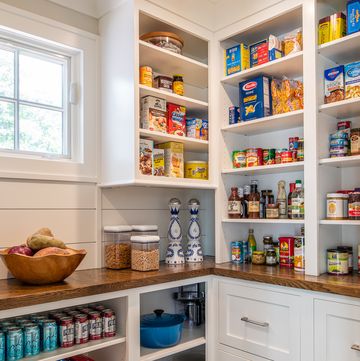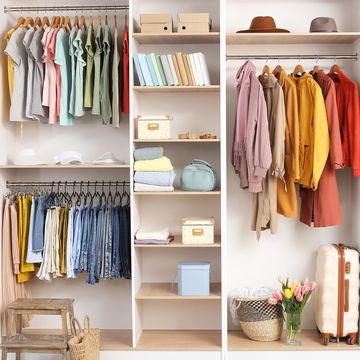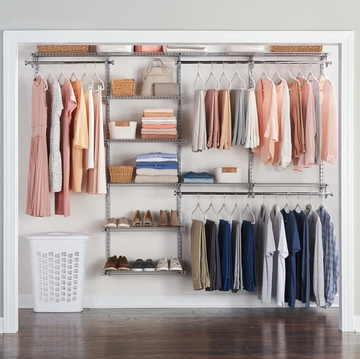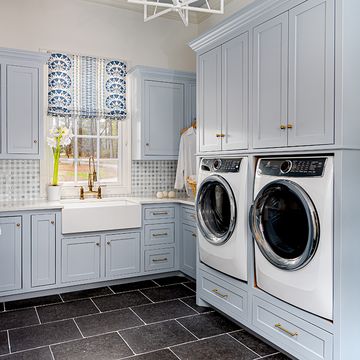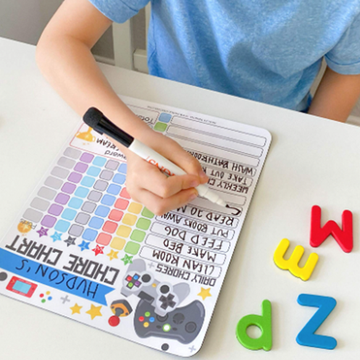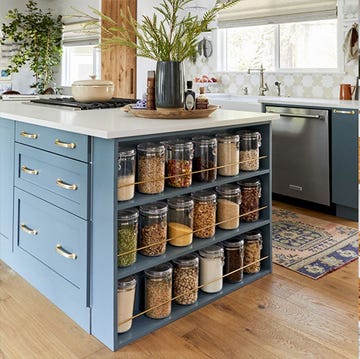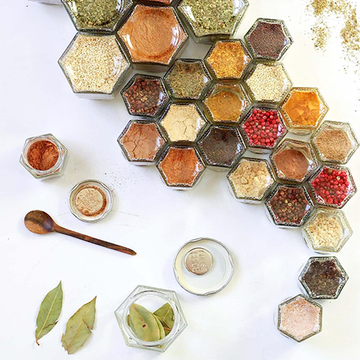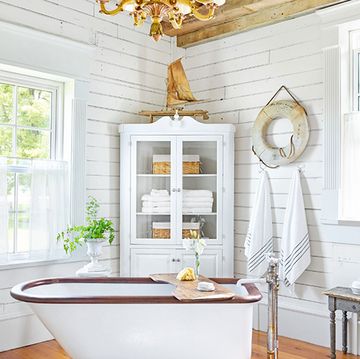The dresser provides two types of storage: concealed places to hide underwear, socks, and other clothing and valuables, and an open, accessible top surface for a jewelry box, family pictures, or other visually attractive elements. The challenge is to make certain that the dresser does not become the parking place for the random clutter that seems to migrate to the bedroom, such as mail or car keys.
Begin by removing everything in and on top of the dresser. Use this opportunity to weed out frayed bras and underwear that you no longer wear, socks and handkerchiefs with holes in them, and other garments that are no longer usable. Also get rid of small bits and pieces that you might have been holding onto for no good reason, such as orphaned cuff links. Move items that don't belong in the dresser, such as playing cards, sunglasses, or family pictures waiting to be framed.
What's left will be a combination of clothing and possibly items of value that have no other logical place to go. That's okay. The dresser should serve as a central storage area for undergarments, and can also house valuables that you want to keep but won't necessarily be using or even looking at on a regular basis. These can include mementos such as medals and awards, seldom-used jewelry such as tie tacks and cuff links, extra shoelaces, and other similar items. The trick to permanent dresser organization is to give everything that goes in or on the dresser a set place, even if you have to create one with special dividers or independent compartments such as boxes. Then put back all the clothing you'll store in the drawers, which will reveal how much extra storage space you have.
• Drawers: As with the closet, all the clothes you keep in the dresser should be neatly grouped by type. With some of your clothing, this is easy: It's a simple matter to fold men's underwear and place it in rows. Women's undergarments are a little more of an organizational challenge, and should be kept to one section of the drawer using a divider, a box, or a see-through bag. If much of what you want to store is loose goods, turn to drawer inserts. Specialized inserts are available for everything from earrings and necklaces to rolled ties and folded handkerchiefs. You can also mix and match independent plastic or wood compartments. Some plastic compartments snap together, letting you customize your drawer design.
• Dresser top: There are certain items best suited for the top of the dresser. Cosmetics may be essential if you do your makeup in a mirror over the dresser. An heirloom jewelry box is lovely displayed on the dresser, and provides a place for your accessories. Whatever is on top of the dresser should be self-contained. Jewelry should be kept in a jewelry box. Cosmetics should be placed on a decorative tray or in a box or cosmetics bag to prevent them from migrating. Every dresser top should have some sort of valet and a change keeper. The valet can be as formal as a wood tray with separate compartments, or as informal as a woven basket. Whatever you choose as a valet, that's where all small "pocket" clutter should be placed: cell phone, keys, money clip, wallet, and anything else you regularly carry. The change keeper is the place to put all your loose change when you empty your purse or pockets. This can be a decorative bowl, a vintage bank, or even a wide-mouthed bottle. The point is to create a set place for all the loose items that might otherwise clutter the top of the dresser. (If you have small children, be sure that your dresser has safety straps to secure the dresser frame to a wall stud, along with safety catches on the drawers.)
For more on organizing clutter, see Good Housekeeping's The Complete Clutter Solution



